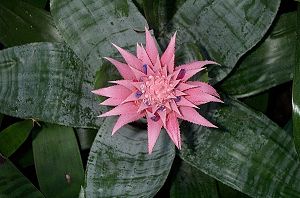 |
 |
 |
 |
 |
| magyar | English | deutsch | italiano | espańol |
Botanical Garden
Budapest City Guide:
Budapest Public Transportation
Metro Lines of Budapest
Weather in Budapest
Central Market Hall
St. Stephen's Basilica
Gellert Thermal Bath and Swimming Pool
Gellért Hill
Budapest baths
Hungarian National Opera
Museum of Fine Arts
Gallery of Arts
Museums and galleries
Heroes' Square
Budapest Zoo and Botanical Garden
Budapest Amusement Park
City Park Skating Rink
Margaret Island
The Citadella
Sziget Festival
Ráday street
Puskás Ferenc Stadium
Botanical Garden
Budapest Card
Confectioners in Budapest
City structure of Budapest
Ferihegy 1 Airport
Ferihegy 2 Airport
Airline Companies at Ferihegy
Parking in Budapest
Public Toilets
Distances from Budapest
New Year's Eve in Budapest
Air Pollution in Budapest
Pickpockets in Budapest
Homeless People in Budapest
Changing Money in Budapest
Ships in Budapest
West End City Center
Market customs
The Danube in Budapest
Hungary Tourist Guide
| Hotel Booking |
| Hungarian cities |
| Programs |
| Car Rental |
| Weather |
 The so called "Füvészkert" in Budapest is the oldest botanical garden of Hungary, the official name of which is ELTE Botanical Garden. The garden flaunting more than 7000 plant species has been a nature conservation area since 1960 nationwide, and part of the Cultural Heritage since 2006. "Füvészkert" may be familiar to most people from the world famous novel by Ferenc Molnár, The Paul Street Boys.
The so called "Füvészkert" in Budapest is the oldest botanical garden of Hungary, the official name of which is ELTE Botanical Garden. The garden flaunting more than 7000 plant species has been a nature conservation area since 1960 nationwide, and part of the Cultural Heritage since 2006. "Füvészkert" may be familiar to most people from the world famous novel by Ferenc Molnár, The Paul Street Boys. The garden was established in 1770-71 in the scope of the medical faculty of the University of Nagyszombat, founded by Péter Pázmány, archbishop of Esztergom, in1635. On the basis of the self-sacrificing work of Jakab Winterl - the founder of the garden - and his follower, later successor, Kálmán Kitaibel the collection found in "Füvészkert" has gained world-wide fame. Until it was placed to its final home in the heart of Józsefváros, the botanical garden had experienced many removals and trials.
In 1777, with the movement of the university to Buda, Jakab Winterl is compelled to preserve the plants to prosperity on his own estate, however in the following year an estate is let out to "Füvészkert" in Krisztinatown. In 1784 the medical faculty moved to Pest, at the same time another place, the garden of the Franciscan cloister of Pest, was utilized for the botanical garden. After the visit of Joseph II. the Chamber gave more significant money supply and this way the long awaited glass-house and marble pool of water-plants could be finished.
The garden proved to be small, and for the advice of Palatine Joseph they looked for a more worthy place. In 1808 the collection of the garden was moved to the estate of Prince Antal Grassalkovich, in Ország Street. The garden with an area of 1.17 acres was finished by 1815, according to the system of Linnae. Unfortunately owing to the great flood in 1838 and carelessness, the condition of the garden worsened a lot. For the advice of Palatine Joseph the 10.1 acre estate of Antal Festetich was purchased for the garden in 1847. The former hunting-seat, which can be found here, was built according to the plans of Mihály Pollack 200 years ago; today it is the central building of the garden. Since the end of the 1800's there have been memorials standing for the honor Sámuel Diószegi and Mihály Fazekas, authirs of the first Hungarian herbal, Pál Kitaibel and Palatine Joseph among others. However by the beginning of the 20th century the capital started to surround the garden as a consequence of which the English park-like nature of the garden, which provided a romantic landscape, disappeared. On 2/3 of the area of the garden clinical buildings were built.
Today the botanical garden includes up to 7000 plant species and variations on a 3-acre-area. The cactii, bromelia, and orchid collection is especially rich, just as the collection of palms and the different tropical arum lily sorts. The different types of shrubs, stemming from the subtropical regions of Australia, provide a special spectacle with their blossoming in winter. Built particularly for this purpose at the and of the previous century, the Victoria House is a special glass building housing the Amazonas water lily. The collection of insectivorous plant, which lead a unique way of life, can also be found here. The historic palm house, built in the previous century, re-built in 1966, and the new glass house finished in are home to the tropical and subtropical plants. The arboretum of the garden - putting up to 800 tree and shrub types on display in spite of the small area - is of special value. The oldest trees of the garden are the Chinese gingko, which has lived up to 150 years. The collection which is rich in evergreen plants, pines, is worth visiting even in the winter season. Some of the rock-gardens provides a sample of the plants of mountains: we can get a closer look on the flowers of the Alps, the Carpathians, the Balkans, and Central-Asia. The Hungarian flora is represented by more than 400 species, classified according to geographical regions and types of habitats.
E-mail:

Fax: +36 1 900 9079
All rights reserved.